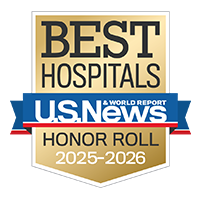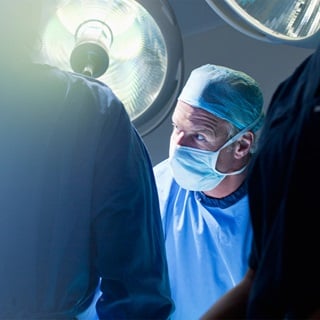Peripheral Artery Disease

Overview
What is peripheral artery disease (PAD)?
Peripheral artery disease (PAD), also called peripheral arterial disease, is a progressive narrowing of the blood vessels. Most often, it's caused by atherosclerosis, the build-up of plaque, a fatty substance, along the inner lining of the artery wall. Over time, as plaque hardens and thickens, it can interfere with blood circulation to the arms, legs, stomach and kidneys. Blood circulation to the brain and heart may be reduced as well, increasing your risk for stroke and heart disease. The most common type of PAD affects blood flow to the legs and feet.
While PAD can affect anyone, one out of three people with diabetes over age 50 has the disease.
If PAD isn't treated, it may lead to severe disability and, in the most serious cases, the need to amputate the affected limb. Up to 70 percent of all limb amputations not caused by trauma are performed on people with diabetes who have severe PAD.
Our approach to peripheral artery disease
UCSF offers cutting-edge care for people with PAD, as well as for those at high risk of developing it. Since each patient's needs vary, our team includes vascular surgeons, heart surgeons, interventional radiologists, podiatrists, endocrinologists, plastic surgeons and other specialists. Together, they provide the most effective therapies – many developed here at UCSF – to prevent or treat PAD and stop it from recurring.
Awards & recognition
-

Among the top hospitals in the nation
Symptoms of PAD
Many patients with peripheral artery disease (PAD) have mild symptoms or no symptoms at all. Some experience painful cramping or fatigue in their legs after walking or climbing stairs, which is relieved by a short period of rest. This pain is most often felt in the calves, but it can also be felt in the buttocks, thighs, or feet. This condition is called intermittent claudication.
Other PAD symptoms include:
- A pale, discolored, or blue foot or leg
- No more toenail growth
- Coldness in the lower leg or foot, especially compared to the other leg
- Hair loss on the feet and legs
- Leg numbness or weakness
- Sores on the toes, feet or legs that heal slowly or don't heal
Diagnosis of PAD
To make a peripheral artery disease diagnosis, your doctor will take your complete medical history and perform a physical exam. You will also have one or more of the following tests to confirm the diagnosis:
- Ankle-brachial index (ABI). An ABI is a simple way to measure the blood flow in your legs using a blood pressure cuff.
- Duplex ultrasound. This special type of ultrasound shows how blood moves through your arteries and veins and can reveal blockages.
- Computed tomography (CT) angiography. This type of X-ray looks at the arteries that supply blood to your arms and legs, and in some cases, the arteries that supply blood to your chest, head and neck, or abdomen and pelvis. The resulting detailed images can reveal areas that are narrowed or blocked.
- Magnetic resonance angiography (MRA). This is an MRI scan of the blood vessels that shows where there are build-ups of plaque.
You may also have blood tests to measure your cholesterol, levels of certain proteins and homocysteine, an amino acid in the blood that, at elevated levels, can increase the risk of stroke.
Treatment of PAD
The treatment of peripheral artery disease depends on the severity of the condition. Treatment options range from basic lifestyle changes and medications to surgery.
Lifestyle changes to treat peripheral artery disease
Your doctor may recommend a few lifestyle changes as part of your treatment for PAD. These could include eating a diet low in saturated fats, getting more physical activity, and quitting unhealthy habits like smoking. Controlling high blood pressure, high blood cholesterol, and diabetes may be recommended as well.
Medications for peripheral artery disease
Various types of medications can help prevent progression of PAD or improve the symptoms. You doctor may prescribe any of the following:
- Medications, such as aspirin or clopidogrel, to prevent blood clots (antiplatelet therapy)
- Drugs called statins, such as simvastatin, atorvastatin or pravastatin, to lower your cholesterol
- Medications, such as cilostazol or pentoxifylline, to treat your intermittent claudication, helping you walk longer distances.
- ACE inhibitors which are used to treat high blood pressure
Surgery for peripheral artery disease
If your condition worsens or does not improve with lifestyle changes and medications, surgery may be necessary. The type of procedure will depend on the size and location of your blockage.
Bypass surgery creates a detour, or bypass, around the blocked artery so that blood can flow normally. The bypass is created from part of one of your veins or from a manufactured synthetic tube. It's surgically attached to the blocked artery, creating a new path for blood to flow to your leg tissues.
Endarterectomy removes plaque from the blocked artery. It may be performed with other procedures, such as bypass surgery. The effectiveness of endarterectomy depends on the location and severity of your blockage.
Endovascular therapy is a minimally invasive technique that opens or widens arteries that have become narrowed or blocked. The most commonly used procedure is called balloon angioplasty. A catheter is threaded through a leg or arm artery until it reaches the blocked artery. A balloon, connected to the catheter, is expanded to open the artery and then a wire mesh tube, called a stent, is put in place to keep the artery open.
UCSF Health medical specialists have reviewed this information. It is for educational purposes only and is not intended to replace the advice of your doctor or other health care provider. We encourage you to discuss any questions or concerns you may have with your provider.
















